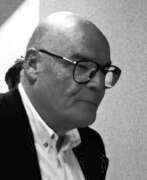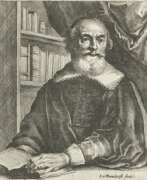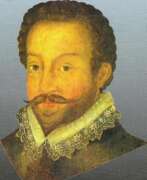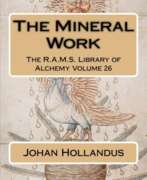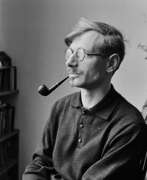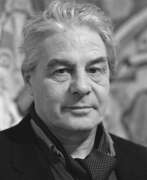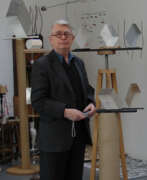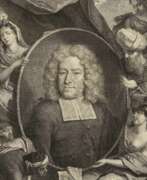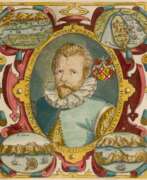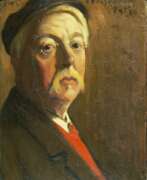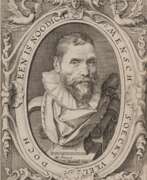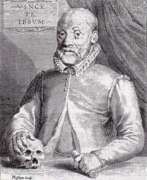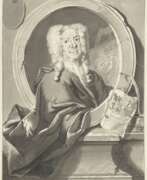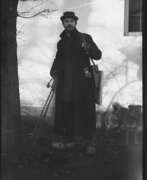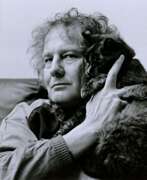Writers The Netherlands


Cornelius Gerardi Aurelius, also called Goudanus, was a Dutch humanist scholar, writer, and historian.
Aurelius was a permanent canon (monk) of the Augustinian monastic order and is one of the first humanists of the Netherlands in the 16th century. He wrote poetry, historiography, hagiography, political and theological works. Aurelius also corresponded with many of the famous men of his day, especially Erasmus.
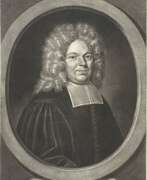

Jacques Basnage de Beauval was a French theologian and historian, diplomat and writer.
His father was a prominent lawyer and his grandfather and great-grandfather were pastors, Jacques studied theology and languages at the Academy of Saumur, then at Geneva and Sedan. In 1676, Jacques Basnage was appointed pastor at Rouen during the revocation of the Edict of Nantes, was forced to flee France for Holland, where he worked as a theologian, polemicist, historian, and diplomat in the service of the Grand Pensioner Hensius.
In 1717, on behalf of Holland, Basnage was sent to sign the treaty of the Triple Alliance (France, Holland, England). In the Annals of the United Provinces (1719-1726), compiled from the peace negotiations held at Münster, he displays breadth of vision, wisdom, and impartiality.
About 1719 Jacques Basnage was appointed historiographer of the Dutch states. He wrote several books on the Bible, the history of the Church, and the history of the Jewish people. Among the best known of these are his History of the Religion of the Protestant Denominations (1690), History of the Church of Jesus Christ to the Present Time (1699), written from Protestant positions, and History of the Jews (1706), as well as Jewish Antiquities, or Critical Notes on the Republic of the Jews (1713).
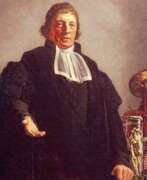

Jan Bleuland was a Dutch physician, medical scientist, educator and writer.
Bleuland was an intellectually advanced man, a sought-after physician, and a rich lover of the arts. Jan Bleuland taught anatomy, physiology and obstetrics for 31 years and was professor and rector of Utrecht University. His talents as a physician and medical researcher were recognized not only by his patients and the scientific community, but also by the highest authorities.
During his lifetime, Jan Bleuland amassed a large collection of medical specimens of the human body, which he used for research. Part of this significant collection is still on display in the original wooden Bleulandkabinet in the Utrecht University Museum. The Bleulandkabinet contains an extensive collection of skeletons, embryos in alcohol and wax preparations of body parts. His pioneering preparations were acquired by Utrecht University by royal decree of King Willem I in 1815 and are still used as teaching material.


Johannes Busch was a major Dutch clergyman and reformed theologian.
As a monastic reformer and chronicler, the Augustinian canon of Windesheim, Johannes Busch is one of the most prominent figures of the Devotio moderna ("New Piety") movement in Catholicism. With his historiographical works Chronicle of the Monastery of Windesheim and Liber de reformatione monasteriorum he shaped the association of the Windesheim monastery and the late medieval observance movement.
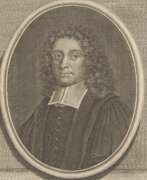

Étienne Chauvin was a French Protestant theologian and philosopher.
Chauvin's philosophy and worldview were entirely Cartesian. After his expulsion from Nîmes, Étienne Chauvin withdrew to Rotterdam, where he preached for several years in the Walloon Church. He was succeeded as professor of Baille at Rotterdam. In 1695 the Elector of Brandenburg appointed him pastor and professor of philosophy, and afterward inspector of the French college at Berlin.
Etienne Chauvin's major work is Lexicon Rationale, sive Thesaurus Philosophicus (1692). He also wrote Theses on the Knowledge of God (1662) and published the New Journal of Scholars (1694-1698).
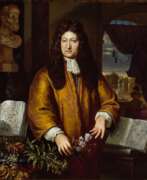

Jan Commelin (Dutch: Jan Commelin or Jan Commelijn), also Johannes Commelin, was a Dutch botanist.
Jan Commelin is the son of the historian Isaac Commelin. He was a professor of botany and director of the Amsterdam Botanical Gardens. Jan Commelin wrote many scientific works on botany, notably compiling the first volume of descriptions of East and West Indian plants. The second volume was written by Jan's nephew, the botanist Caspar Kommelin, who expanded the earlier descriptions and added notes on African plants.
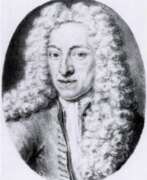

Caspar Commelin was a Dutch botanist and mycologist.
Caspar Commelin was trained as a medical doctor, practiced botanical science and worked on books that were left unfinished due to the death of his uncle, botanist Jan Commelin. Caspar was mainly interested in exotic plants.
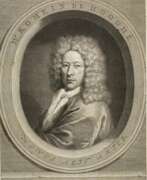

Romeyn de Hooghe was a Dutch painter, sculptor, engraver and caricaturist of the late Baroque period, writer and philosopher.
Hooghe became famous for his political caricatures of King Louis XIV of France and propaganda pamphlets in support of William of Orange. He portrayed the war against the French monarch and his allies as a struggle between freedom and religious despotism.
Romeyn de Hooghe was a superb engraver and created over 3,500 engravings during his lifetime. His most important work is Hieroglyphica of Merkbeelden der oude volkeren (Hieroglyphics or Symbols of the Ancient Peoples), where he appeared not only as a consummate master of engraving, but also as a historian, talented writer and philosopher. This book has long been regarded in Europe as one of the most authoritative sources on classical mythology. It contains 64 engravings illustrating all stages of the narrative of myths, ancient cults and beliefs, and the interpretation of scripture, a guide to medieval Europe.
Romeyn de Hooghe also illustrated books and painted large panels. During his lifetime he was widely recognized as a painter and sculptor not only in his own country but also in other European countries.
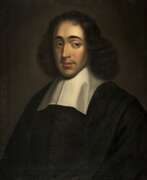

Benedictus Spinoza (Spanish: Baruj Espinosa) at birth Baruch Spinoza is a Dutch philosopher-rationalist of Jewish origin, a bright representative of the Age of Enlightenment.
Spinoza was born into a family of Portuguese Jews in Amsterdam, who converted to Christianity but returned to Judaism. As a young man, he was considered an outstanding Talmudic scholar and a promising religious scholar. But, inspired by the philosophical writings of René Descartes and Francis Bacon, the young philosopher soon fell outside the orthodox tradition because of his radical views. In 1656 he was severely excommunicated for heresy.
For the rest of his life, Spinoza spent his modest life grinding lenses and privately teaching philosophy, but he also wrote anonymously published philosophical treatises and secretly exchanged letters with many philosophically inclined luminaries of the wider European Enlightenment. Spinoza's only book, published in 1663 in Amsterdam under his own name, was Renati Des Cartes Principiorum Philosophiae Pars I, & II, More Geometrico demonstrate (Principles of Cartesian Philosophy). These principles served as a preparatory work for many metaphysical views in his most important treatise, Ethics (1677).
Benedict Spinoza defended the philosophical life from religious persecution and advocated a new, liberal, democratic regime to support that life. Although Spinoza was often persecuted as an atheist in his time, his writings played an important role in shaping philosophy, theology, and politics in the centuries to come. Of all the philosophers of the seventeenth century, Spinoza is one of the most relevant today.
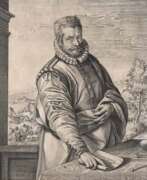

Philips Galle was a Dutch publisher, best known for publishing old master prints, which he also produced as designer and engraver. He is especially known for his reproductive engravings of paintings.
As a resident of Antwerp, Galle witnessed numerous events of the Eighty Years War, notably the siege and looting of the town in 1576 by the Spaniards, called "The Spanish Fury". This rather personal book, which was translated in several languages soon after its first publication, shows Galle as a peace-loving person who intended to stay far away from the political and military turmoil of his era.
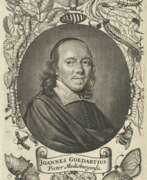

Johannes Goedaert was a Dutch naturalist, entomologist and artist.
Goedaert was one of the authors on entomology and the first to write about insects in the Netherlands and Europe, based on his own observations and experiments between 1635 and 1667. In 1660, Goedaert published the first of three volumes collectively titled Metamorphoses and History of Nature, the last volume appearing in 1669.
Goedaert's work is valuable in that for the first time he used his own drawings instead of woodcuts to illustrate his insects, and they are of noticeably higher quality than those in Moffett's volume. Goedaert was a talented and observant artist and draughtsman, and he used magnifying glasses but preferred to draw insects at life-size. The book depicts detailed phases of insect growth, including their metamorphosis. The scientist not only described the process of their development, but also described and sketched the various stages that insects go through during their life cycle.
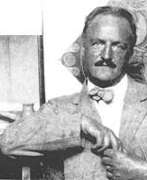

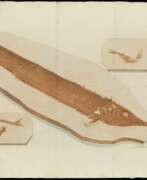

Martinus Houttuyn (Dutch: Maarten Houttuyn) was a Dutch botanist, zoologist and physician.
In addition to his medical practice, Houttuyn practiced science and published many scientific works on natural history, including minerals, fossils, botany and zoology. He was also a keen student of ferns, mosses and seed plants.
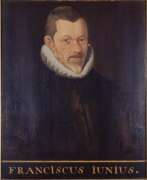

Francis Junius the Elder, born François du Jon, was a French linguist, exegete and professor of Reformed theology, and diplomat.
Junius first studied law and then theology and became a student of Jean Calvin and Theodore Beza in Geneva. For his success and knowledge of languages he was appointed minister at Antwerp, but was forced to flee to Heidelberg in 1567.
In collaboration with Immanuel Tremellius he wrote one of the significant translations of the Bible into Latin, and his theological work De Vera Theologia is the most important work on Reformed dogmatics. Some of du Jon's works were published in 1882 by Abraham Kuyper in his Reformed Library. His son François du Jon the Younger (1591 - 1677) became a noted art historian and founder of Germanic philology.
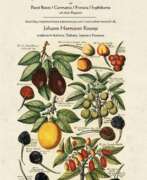

Johann Hermann Knoop was a Dutch and German horticulturist, agronomist and botanist.
Knoop followed his father to work as a gardener in Marienburg, located near Leeuwarden in the Netherlands. He is considered the founder of the science in agronomy that deals with the study of varieties of fruit and berry plants - pomology. Several plants were named in Knoop's honor. He wrote several books on horticulture - Pomology, Fructology and Dendrology), the color engravings in them showing the great variety of form, scale and color of the best fruit varieties. According to Utrecht University, the engravings for Pomologia are by Jacob Volkema and Jan Kasper Phillips.


Jan (Johan) Philip Koelman was a Dutch painter, sculptor, writer and teacher. He attended Cornelis Kruseman's studio together with other artists of this period, such as Alexander Hugo Bakker Korff, David Bles and Herman ten Kate. Between 1846 and 1851 Koelman lived in Rome, to where he travelled for artistic purposes.
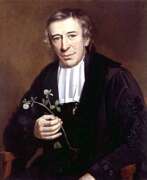

Jan Kops is a Dutch agronomist, botanist and publisher of thematic journals.
In his youth, Kops was interested in botany, but had to study to become a priest. He soon became disillusioned with a career as a preacher and took up his favorite occupation. The fruit of his botanical research was the first volume of the Flora of Batavia, published in 1800. He was engaged in the task of converting the dunes into agricultural land.
Kops great importance to the country's agriculture lies mainly in his work as the first Dutch agricultural official. He possessed great efficiency and great perseverance. On Kops's initiative, the first Dutch agricultural journal, Magazijn van Vaderlandschen Landbouw, appeared between 1803 and 1814, which he himself edited.


Levinus Lemnius (Dutch: Lieven Lemse, Lenneus, Lennius, Lemmens, Lemnii of Lemnes) was a Dutch physician, philosopher, botanist and writer.
He studied under the famous Swiss botanist and bibliographer Conrad Gesner at the University of Louvain and under the famous Flemish anatomist Andreas Vesalius at the University of Padua. Lemnius's book On the Habit and Constitution of the Body was translated by Thomas Newton, an Anglican clergyman who translated some of Lemnius's treatises into English, as well as other modern continental and classical works.
Lemnius is considered the first author to describe the plants mentioned in the Bible, in T. Newton's translation, Herbal for the Bible (1587). Levin Lemnius's most famous book is Occulta naturae miracula (1559), a book of mysteries that was reprinted many times over a period of four hundred years.
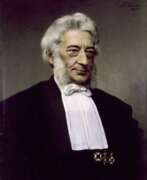

Friedrich Miquel, full name Friedrich Anton Wilhelm Miquel, was a Dutch botanist, professor of botany at Utrecht and Amsterdam Universities.
Miquel was also head of the botanical gardens in Rotterdam (1835-1846) and Amsterdam (1846-1859), and was head of the State Herbarium in Leiden from 1862. Friedrich Miquel wrote several books on the flora of the Dutch East Indies. Corresponding with collectors in Australia and Indonesia, he amassed large herbarium collections from these regions.
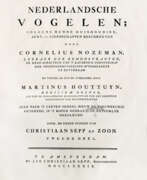

Cornelius Nozeman was a Dutch church minister and ornithological naturalist.
Nozeman was the inspiration for the best Dutch work on ornithology of the 18th century. This long-term project took more than 60 years in total to complete. The work, entitled Nederlandsche Vogelen ("Birds of the Netherlands"), was begun in 1770 by two Dutch craftsmen. The famous engraver and painter Christian Sepp drew the illustrations, and Nozeman wrote the text for the first two volumes. After the death of Nozeman and Sepp, the work on the publication of the work was continued by their successor, physician and biologist Martinus Houttuyn. This voluminous and unique work was completed in 1830 by Christian Sepp's son Jan Christian, a natural history publisher, and his grandson Jan Sepp.
Each volume of this five-volume work of science and art contains 50 images of bird species, and each species is described on several pages.


Adriaen Pietersz. van de Venne was a Dutch painter, graphic artist, and poet of the Golden Age and a member of the Guild of St. Luke in The Hague. He is known for his paintings of genre scenes, allegories, portraits, and historical scenes. De Venne painted many engravings illustrating genre scenes depicting peasants, old men, vagabonds, madmen, and thieves. These works often illustrate aphorisms and proverbs.
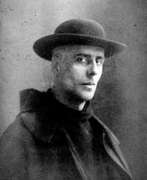

Jan Verkade, birth name Johannes Sixtus Gerhardus Verkade, later changed to Willibrord Verkade, was a Dutch and German Benedictine monk, Post-Impressionist and Symbolist painter.
Jan was captivated by art from his youth and began studying painting at the State Academy of Fine Arts in Amsterdam, later in Paris he met Paul Gauguin, Paul Sérusier and other Symbolists, which played a major role in his worldview. In the last years of the 19th century, Verkade joined the Nabis (Les Nabis), a group of Symbolist artists. Fascinated by esoteric mysticism, the Kabbalah and Eastern magical teachings, he, however, adhered to the canons of Christianity.
In 1893 Verkade went to a Benedictine monastery in Boiron, Germany, painted churches and monasteries, and in 1902 he became a priest and changed his name to Willibrord Verkade. He continued to paint until 1927, but was no longer able to reach the level of his French period, considered his best period. However, he made a significant contribution to the Beuron school of art, which was founded by a confederation of Benedictine monks in Germany at the end of the 19th century. Up until his death in 1946, Verkade led a reclusive life, writing several religious, historical, and scientific linguistic works over the years.
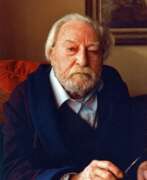

Egon Arnold Alexis Freiherr von Vietinghoff was a German-Swiss painter, author, philosopher and creator of the Egon von Vietinghoff Foundation. He reconstructed the lost painting techniques of the Old Masters, and created some 2,700 paintings.
The immense work of Egon von Vietinghoff includes all classical motifs: flowers, still lifes, landscapes, portraits, nudes, and figural scenes. Due to the large demand, more than half of his total work consists of fruit still lifes. The beholder's normal distance to the picture procures balanced representation and self-contained calm of the object. Without losing himself in details, Vietinghoff leads the eye through the whole spectrum of nuances of color and finds the balance between intensity and gentle peace. Thus, he created the impression of unity and harmonic interaction of object and background, light and shadow, form and color, detail and totality.
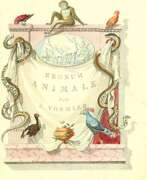

Arnout Vosmaer was a Dutch naturalist and natural history collector.
From 1756 to 1795, Vosmaer was director, curator and researcher of the natural history collection begun by Princess Anne, wife of William IV, and continued by their son, William V. In 1752, he acquired the famous Albert Seb collection, which was later transferred to the cabinet of William V.
Arnaut Vosmaer produced a series of 34 booklets describing the animals in the prince's menagerie, which were published between 1766 and 1805 in Dutch and French. Many of the watercolor illustrations were done by the painter Aert Schouman (1710-1792) and engraved by the etching artist and book designer Simon Fokke (1712-1784).
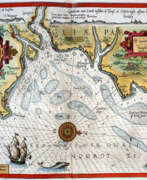

Lucas Waghenaer, full name Lucas Janszoon Waghenaer, was a famous Dutch cartographer, navigator, navigator and writer of the Golden Age.
Between 1550 and 1579, Waghenaer sailed the seas as a senior assistant captain and probably socialized with Portuguese, Spanish, and Italian navigators. The knowledge of nautical charts and the instructions Waghenaer received as a result of these contacts had a great influence on his later work as a cartographer. It is evident that the charts he made had to be based on his observations, and in all his work he had to draw on his own extensive experience of practical navigation. His book Spieghel der Zeevaerdt ("The Navigator's Mirror") or Speculum nauticum super navigatione, first published in 1584, occupies a unique place among the nautical printed works of the sixteenth century, for it is the first printed work with maps.
Moreover, in terms of the magnificent design of the maps and text, it surpasses all other editions of this period and served as a model for pilotage guides and folios with maps even a century later. It is an atlas of nautical charts with instructions for navigation in the western and northwestern coastal waters of Europe. Thanks to the unrivaled skill of engravers Baptiste and Johannes van Deitekom, Waghenaer's original maps were transformed into the most beautiful maps of the time. This book was a huge success, reprinted several times and translated into English, German, Latin and French.
In 1592, Waghenaer's second pilot book Thresoor der zeevaert ("Treasure of Navigation") was published, and in 1598, the third and last publication Enchuyser zeecaertboeck ("Enkhuizen Book of Nautical Charts").
